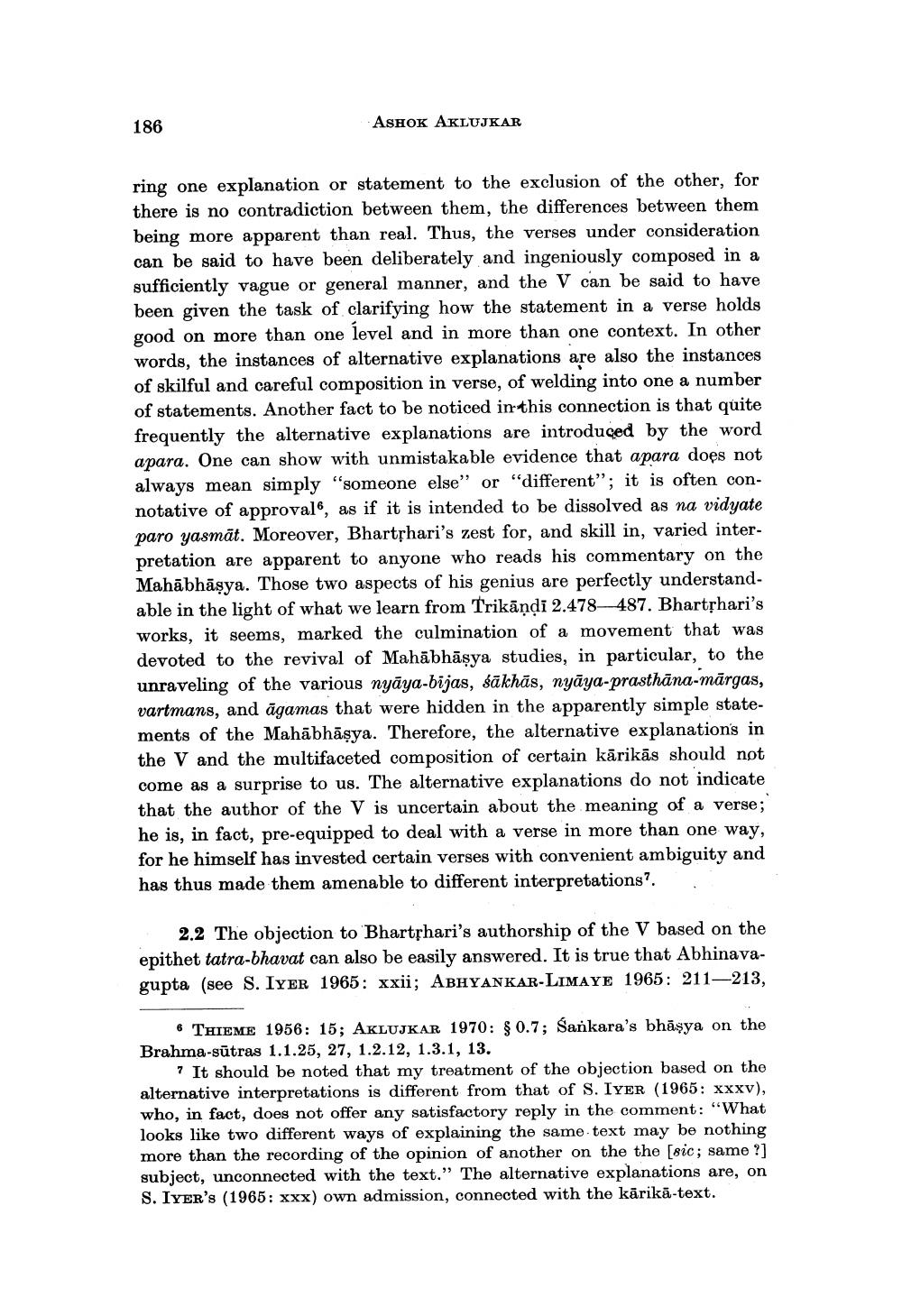Book Title: Authorship Of Vakyapadiya Vrtti Author(s): Ashok Aklujkar Publisher: Ashok Aklujkar View full book textPage 6
________________ 186 ASHOK AKLUJKAR ring one explanation or statement to the exclusion of the other, for there is no contradiction between them, the differences between them being more apparent than real. Thus, the verses under consideration can be said to have been deliberately and ingeniously composed in a sufficiently vague or general manner, and the V can be said to have been given the task of clarifying how the statement in a verse holds good on more than one level and in more than one context. In other words, the instances of alternative explanations are also the instances of skilful and careful composition in verse, of welding into one a number of statements. Another fact to be noticed in this connection is that quite frequently the alternative explanations are introduced by the word apara. One can show with unmistakable evidence that apara does not always mean simply "someone else" or "different”; it is often connotative of approvale, as if it is intended to be dissolved as na vidyate paro yasmāt. Moreover, Bhartshari's zest for, and skill in, varied interpretation are apparent to anyone who reads his commentary on the Mahābhāşya. Those two aspects of his genius are perfectly understandable in the light of what we learn from Trikāņdi 2.478–487. Bhartphari's works, it seems, marked the culmination of a movement that was devoted to the revival of Mahābhāsya studies, in particular, to the unraveling of the various nyāya-bijas, sākhās, nyāya-prasthāna-mārgas, vartmans, and āgamas that were hidden in the apparently simple statements of the Mahābhāşya. Therefore, the alternative explanations in the V and the multifaceted composition of certain kārikās should not come as a surprise to us. The alternative explanations do not indicate that the author of the V is uncertain about the meaning of a verse; he is, in fact, pre-equipped to deal with a verse in more than one way, for he himself has invested certain verses with convenient ambiguity and has thus made them amenable to different interpretations? 2.2 The objection to Bhartshari's authorship of the V based on the epithet tatra-bhavat can also be easily answered. It is true that Abhinavagupta (see S. IYER 1965: xxii; ABHYANKAR-LIMAYE 1965: 211–213, & THIEME 1956: 15; AKLUJKAR 1970: $ 0.7; Sankara's bhāsya on the Brahma-sūtras 1.1.25, 27, 1.2.12, 1.3.1, 13. ? It should be noted that my treatment of the objection based on the alternative interpretations is different from that of S. IYER (1965: xxxv), who, in fact, does not offer any satisfactory reply in the comment: "What looks like two different ways of explaining the same text may be nothing more than the recording of the opinion of another on the the [sic; same?] subject, unconnected with the text." The alternative explanations are, on S. IYER'S (1965: xxx) own admission, connected with the kārikā-text.Page Navigation
1 ... 4 5 6 7 8 9 10 11 12 13 14 15 16 17 18
